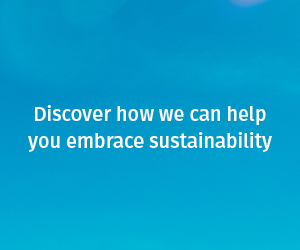Do electric cars help the environment?
We know owning an electric vehicle (EV) means huge savings on running costs, but how good are they for our environment?

One of the interesting aspects when first observing a battery electric vehicle (BEV) is the absence of an exhaust pipe.
This notable exclusion is an obvious clue as to why they offer significant environmental benefits compared to internal combustion engine (ICE) cars – they do not emit CO2 or other noxious substances that pollute the atmosphere and impact public health.
However, ‘tailpipe’ emissions are only part of the answer.
Let's look at the key issues and discover why moving to electric vehicles will be a significant benefit to the environment, including how EVs in Australia emit considerably less greenhouse gases than ICE vehicles, even if charged on the current electricity grid.
Why is this important?
RACQ sees EVs as one potential solution to vehicle emission-related issues and, at this point, they are the most market-ready.
Emissions have risen sharply over the past three decades in the transport sector, making up about 20% of total emissions, with light vehicles accounting for about half of that.
As motorists, our choices play a key role in reducing these emissions.
Since 2018, the proportion of Australians who would consider buying an EV as their next car has stayed about 50%, according to annual surveys commissioned by the Electric Vehicle Council.
If the grid is powered by fossil fuels, how are EVs cleaner?
In Australia, our electricity grid is currently heavily reliant on coal for generation although a rapid transition to more renewable sources is underway.
Despite this, driving a BEV off the current grid is still much less polluting than driving an ICE vehicle.
According to modelling by the NRMA and PwC Australia, an average new ICE vehicle emits about 185 gCO2/km compared to an average new BEV which emits around 98 gCO2/km if charged via the grid.
As renewable energy represents an increasing proportion of the electricity mix and battery capacity improves, BEV emissions are estimated to fall to 58 gCO2/km.
Plus, there remains the option of charging off-grid. When charged solely via renewable energy sources (e.g. solar), BEVs emit nearly zero emissions.
Do BEVs produce any emissions while running?
Unlike ICE vehicles that emit a range of particulates, contaminants and gases as a result of the combustion process, at a vehicle level, BEVs only emit heat and particulate matter.
However, they use the same compounds in their tyres and brake pads as other vehicles and these will expel some particles into the environment through normal wear and tear.
What about the manufacturing process?
Like ICE cars, EVs use metals, rubbers, plastics and glass in their construction, which contribute similar levels of pollution during manufacture. But as manufacturers are starting to use more and more recycled and recyclable components this will be reduced.
Unlike ICE cars, EVs generally rely on rechargeable lithium-ion batteries to run.
The process of making those batteries — from mining raw materials like cobalt and lithium, to production in factories and transportation — is energy-intensive, and one of the biggest sources of carbon emissions from EVs.
Recent studies, including from the Massachusetts Institute of Technology Energy Initiative, have found that while whole-of-life emissions (including production) are still significantly lower for EVs, battery manufacture currently dictates that emissions are greater during vehicle production (between 50% and 75% greater for a mid-size, dedicated BEV compared to an equivalent petrol vehicle).
However, as recycling of lithium batteries increases more and more recycled material will be used in the manufacturing of new batteries reducing the mining component of these emissions.
What about an EV's battery life cycle?
For end-of-life lithium-ion batteries, reuse recycling is currently possible.
Leading car manufacturers and other entities are developing strategic alliances to create a second-life market for used EV batteries.
Recently, the focus has been on developing large-scale energy storage systems to make use of the capacity that remains in batteries after their use in vehicles.
There appear to be significant, environmentally friendly opportunities ahead.
Companies around the world are in a race to improve the efficiency and effectiveness of battery recycling and to craft the next-generation electric vehicle battery that could leapfrog the current lithium-ion battery, improving energy density and efficiency while lessening reliance on rare earth materials.
Energy storage capacity potential
Looking to the future, as more EVs become capable of bidirectional charging (vehicle-to-grid technology), the opportunity for EVs to become a dynamic, flexible new energy storage source will eventuate.
In this instance, energy service providers could encourage EV owners to charge up from excess, intermittent sources like solar and wind, and then use the energy stored to power their houses when they need it or sell it back to the grid to support grid efficiency and reliability.
Looking forward, EVs can play a positive role in the energy sector and help to put downward pressure on vehicle running costs and electricity prices.
Other long-term benefits
While electric cars are cleaner and more efficient, there are many other reasons for supporting their introduction, including reduced motoring costs for consumers, improved national health standards and bolstered fuel security.
Producing electricity for vehicle propulsion also has benefits and relies on Australian-made energy, lessening our reliance on importing liquid fuels from overseas markets.
While this presents some potential challenges, it also presents some significant opportunities for industry and consumers.
BEVs are better for the environment than ICE vehicles
In conclusion, BEVs today are significantly better for the environment, even if solely charged via the current electricity grid.
As we continue to improve vehicle technologies and transition towards more renewable energy sources, EVs will become ‘greener’.
Plus, there are many other potential societal benefits to be realised.
Article written and supplied by the NRMA
Related topics
Things to note
The information in this article has been prepared for general information purposes only and is not intended as legal advice or specific advice to any particular person. Any advice contained in the document is general advice, not intended as legal advice or professional advice and does not take into account any person’s particular circumstances. Before acting on anything based on this advice you should consider its appropriateness to you, having regard to your objectives and needs.
Insurance Products (excluding Travel Insurance) are issued by RACQ Insurance Limited ABN 50 009 704 152 (RACQI) and arranged by its agent, RACQ Distribution Services Pty Ltd (RDS) ABN 35 116 361 650, AFSL 567130 and RDS' authorised representatives (including RACQ Operations Pty Ltd ABN 80 009 663 414, AR No. 234978 (RACQO). Conditions, limits and exclusions apply. RDS and RACQO are in the RACQ group of companies. One of the companies in the RACQ group of companies has a minority shareholding in RACQI.
RDS and RACQO have not taken your personal objectives, circumstances or needs into account when preparing advice regarding insurance products and you will need to consider whether the advice is appropriate for you. Read the Product Disclosure Statement (PDS) and any applicable Supplementary PDS before making a purchase decision on this product. You can also access our Target Market Determinations on this website. RDS receives a commission from RACQI for the policies it arranges. RACQO receives fees paid for services it provides to RDS. Further details about remuneration are available on request prior to purchasing.
Banking and loan products issued by Members Banking Group Limited ABN 83 087 651 054 AFSL/Australian credit licence 241195 trading as RACQ Bank. Terms, conditions, fees, charges and lending policies apply. This is general advice only and may not be right for you. This information does not take your personal objectives, circumstances or needs into account. Read the disclosure documents for your selected product or service, including the Financial Services Guide and the Terms and Conditions, and consider if appropriate for you before deciding.
Except for RACQ Bank, any RACQ entity referred to on this page is not an authorised deposit-taking institution for the purposes of the Banking Act 1959 (Cth). That entity’s obligations do not represent deposits or other liabilities of RACQ Bank. RACQ Bank does not guarantee or otherwise provide assurance in respect of the obligations of that entity, unless noted otherwise.
RACQ Bank subscribes to the Customer Owned Banking Code of Practice which establishes higher standards than the law requires. The Code reflects modern consumer expectations and developments in approaches to issues such as consumer vulnerability, guarantors, and supporting customers through financial hardship. Please read our Customer Owned Banking Code of Practice page for more information.
RACQ Operations Pty Ltd (ABN 80 009 663 414 AR 000234978) and Members Travel Group Pty Ltd (ABN 45 144 538 803 AR 000432492) are acting as an Authorised Representative of the issuer of the insurance, Tokio Marine & Nichido Fire Insurance Co., Ltd. (ABN 80 000 438 291 AFSL 246 548). Any advice set out above is general in nature only, and does not take into account your objectives, financial situation or needs. Before purchasing any travel products, please consider the RACQ Travel Insurance Product Disclosure Statement (PDS) and the Target Market Determinations (TMDs) that apply to these products. Whilst the PDS outlines the Terms and Conditions of these products, the TMDs outline the intended class of customers that comprise the target market for these travel products. This will allow you to consider which products best suit your objectives, financial situation and needs and consider the products appropriateness to your personal circumstances. TMDs also outline matters involving the distribution and the review of these products. The PDS, Supplementary PDS and TMDs for each travel product can be found here.

